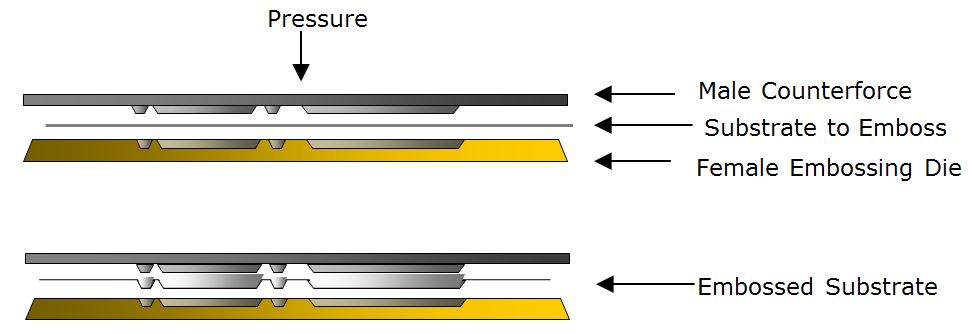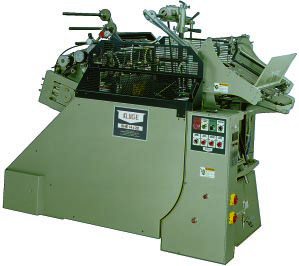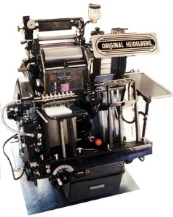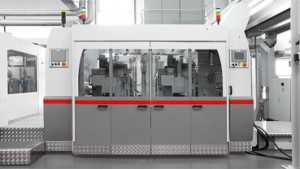An Embossing is created by pressing a female Die into a male Counterforce with the substrate to be embossed between the two. The Die and its matching Counterforce are aligned in registration and the substrate positioned so that it is located in registration (the correct position). Then the Die and its Counterforce are brought together under huge pressure, distorting the substrate and forcing it to conform to the contours of the Die. The resulting sculptured effect on the substrate adds a new dimension to it.

Examples of machines used to emboss and or Foil Print
Embossing is the procedure by which the surface of the substrate is pushed forward using an Embossing Die to cause a raised image. Embossing is a simple and cost effective process of finishing. It is one of the most economical ways to enhance the look and feel of any embossable substrate whether it’s paper, plastics, cloth, metal etc. There are a number of factors that need to be looked at in an embossing project. Selecting the type of metal Dies to be used, the surface finish required, the substrate to be embossed, artwork creation and the embossing image and details are all important issues that need to be addressed.
Machine made papers, mould made papers and handmade papers are all suitable for embossing. Create incredible embossing effects using a fairly simple process that takes chic to new levels.
There are a number of different types of embossing processes that are available to use.
Embossing can be created in 3 ways, “Wet”, “Wet and Dry” and the most common “Dry”.
The Wet method is used during the paper manufacturing process. The embossing dies come into contact with the wet pulp or damp paper under high pressure. This creates a raised surface. Another way to embossing paper is to place the selected die directly onto a freshly pulled sheet of paper and let the sheet dry on the mould. The Wet – Dry method of embossing is extensively used in the manufacture of huge quantities of “off the self” Embossed paper and card stock for general and specialist commercial printing. The paper is dampened and pressed against an embossing block or plate to emboss. However, the most common and effective method of embossing is to impress a die and counterforce, in registration, into the sheet under pressure.
When embossing certain plastics the substrate is heated to soften the material before embossing. This is to improve their embossing characteristics and help retain the Embossing. These types of substrates are memory materials and gradually loose some detail as it tries to go back to its original form.


